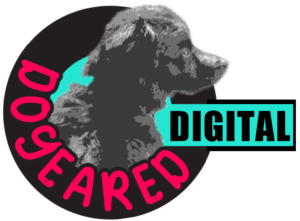Have you ever scrolled through a brand’s website or social media and noticed a disconnect? The blogs talk about one thing, the emails another, and the Instagram graphics something else entirely. The disjointedness probably left you with one overwhelming question: Huh?
This kind of fragmentation is an unfortunate reality of brands without a solid messaging hierarchy in place.
A messaging hierarchy creates alignment across all your content marketing. It acts like a ladder, moving readers from awareness at the top to consideration and conversion at the bottom.
In this post, explore why a messaging hierarchy is critical and take you rung-by-rung up how you can create one for your brand.
Why You Need a Messaging Hierarchy
A messaging hierarchy ensures two things:
- Consistency across content – With core messages percolating through everything you publish, your brand narrative becomes cohesive. This builds authority and trust by demonstrating expertise in your content marketing.
- Gradual engagement – Moving readers down a sequence of messaging gives you time to educate and influence them. Draw them in with awareness messaging, then motivate action further down the hierarchy. This long-term approach is far more effective than disjointed, one-off information in building loyalty.
Without centralized messages, you end up confusing and overwhelming your audience. A hierarchy smoothes out your customer interactions by focusing on 1-3 big ideas and building on them incrementally.
Crafting Your Hierarchy: Steps to Take
But how do you implement this? We’re glad you asked!
Identify Your Core Brand Messages
Start by distilling your brand down to 1-3 primary messages or value propositions. These are the key ideas you want readers to remember about your company.
Consider a hypothetical soap company. We’ll call it Lather & Luxe. Let’s say their 3 core value propositions are:
- Luxurious Experience
- Effective & Nourishing Formulas
- Ethical & Sustainable Practices
To identify your own, really drill into what makes your brand unique and the value you provide. Which messages resonate most with your current customers?
Break Down Into Supporting Messages
Next, develop 3-5 secondary messages and supporting points that provide evidence for those primary messages. These secondary messages should expand on how you accomplish what your primary messages promise.
Lather & Luxe’s secondary messages could range from botanical extracts to reusable packaging.

Now it’s your turn to dig into the features, services, and details that demonstrate your primary messages. Consider how each of your secondary messages aligns with the stages of the customer journey.
Organize into a Hierarchy
Structure these messages from broad awareness at the top to narrower consideration below:
- The ‘What We Do’ – Primary messages form the top level to make potential customers aware of your brand
- The ‘Why We Do It’ – Secondary messages and details come next to motivate interested prospects to learn more about your offering
- The ‘How We Do It’ – Further down, include product attributes to close the sale or convert the lead
Map this out visually to clearly see how messaging flows top to bottom. You should use this map to outline your content marketing campaigns and make sure they have a clear narrative.

Repeating the main brand messages across all content reinforces them. But you also need to lead readers down the sequence of messaging through…
Bring to Life Across Content Types
Blog posts and social media put your brand on the map and, with proper messaging hierarchy, boost recognition of your core messages. To turn awareness into conversions, guide people to:
- Landing pages on specific secondary topics. For example, point people towards a page on brand collaborations.
- Long-form content like guides that explore the nitty gritty. One way to do this is to direct people to an ebook about your product’s use cases.
- Short-form content like videos for quick explanations. This can be something like a brief and engaging demo video.
Multiple content formats across various channels where your audience is active nurtures prospects from introduction to interest to decision.
Always remember to track content performance so you can ensure that your messaging hierarchy is resonating. Monitor click-through rate, time on page, and opt-ins.
Hierarchy Examples from Leading Brands
Let’s look at examples of effective messaging hierarchies from a few familiar brands:
Starbucks
Primary message: Quality coffee, “third place” experience
Secondary messages: Connection, community, passion
Supporting details: Coffee expertise, welcoming spaces, customer engagement
The sequencing here introduces readers to Starbucks’ signature brews and their famously inviting ambience. Moving down the ladder, their content highlights the brand’s culture and fosters human connections through content on barista training and community programs.
Nike
Primary message: Authentic athletic performance
Secondary messages: Innovation, inspiration, achievement
Supporting details: Product technology, sports partnerships, brand history
Nike’s hierarchy starts by selling the motivation and benefits of sports and fitness. Further down, it provides the “how” through technical details on shoe design, materials, and exclusive athlete sponsorships.
Apple
Primary message: Creativity, ingenuity, design
Secondary messages: Customer experience, luxury
Supporting details: Retail spaces, product launches, integrated ecosystem
Apple’s core brand messaging inspires with big ideas of imagination and innovation. Think of those eye-catching billboards showcasing professional-grade photos taken on the latest iPhone. Secondary content spotlights exceptional customer service through Genius Bar details and high-end products for turning inspiration into reality via product launch content.
Final Thoughts
The best brand messaging starts from within. Before mapping your hierarchy, do the groundwork to deeply understand what makes your brand special and what keeps your customers coming back. By getting to the heart of what connects your brand to your target audience, you can lay the foundation for crafting an authentic, resonant messaging hierarchy.

